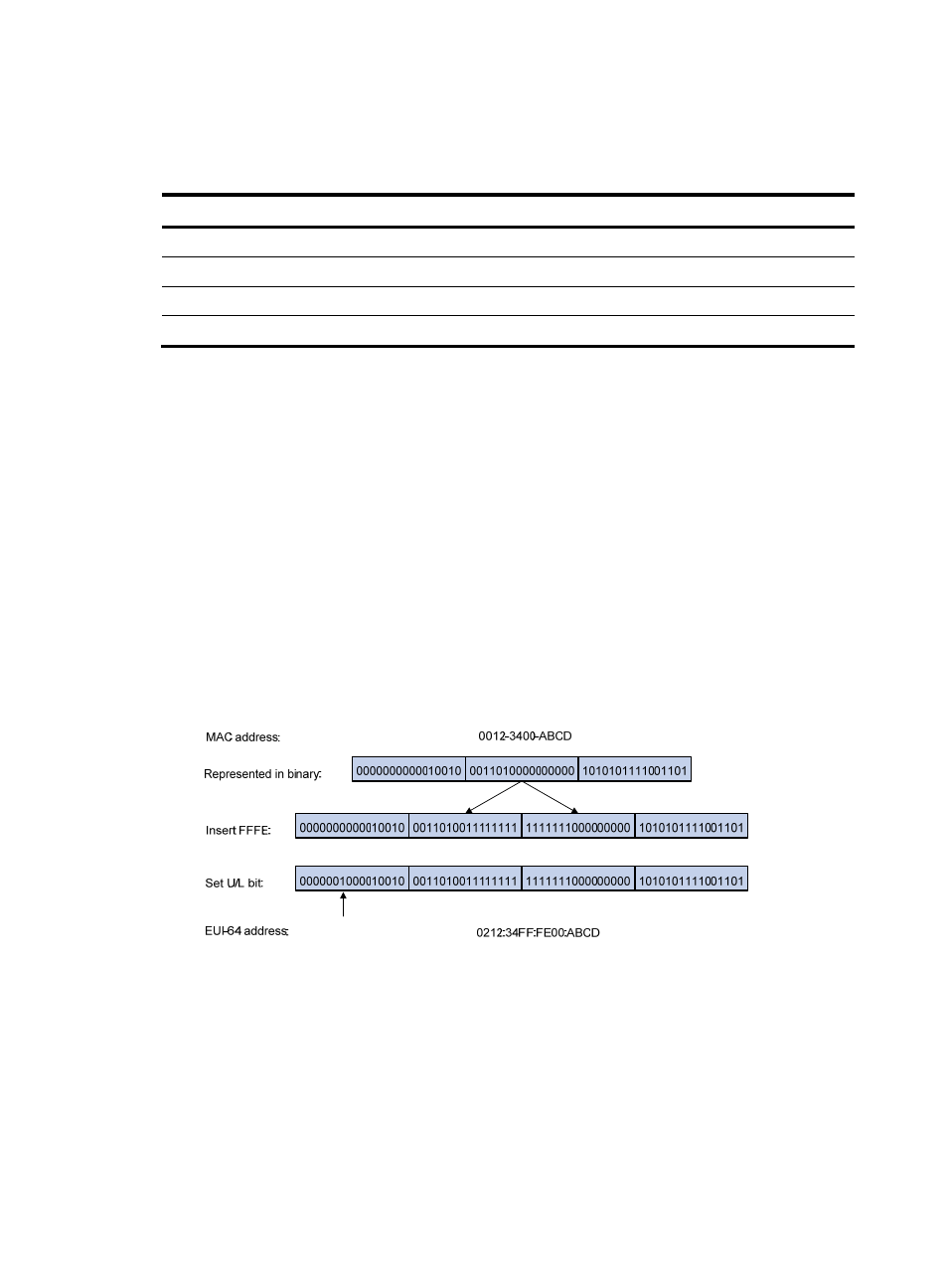Multicast addresses, Eui-64 address-based interface identifiers – H3C Technologies H3C S12500-X Series Switches User Manual
Page 122

111
Multicast addresses
IPv6 multicast addresses listed in
are reserved for special purposes.
Table 6 Reserved IPv6 multicast addresses
Address Application
FF01::1
Node-local scope all-nodes multicast address.
FF02::1
Link-local scope all-nodes multicast address.
FF01::2
Node-local scope all-routers multicast address.
FF02::2
Link-local scope all-routers multicast address.
Multicast addresses also include solicited-node addresses. A node uses a solicited-node multicast
address to acquire the link-layer address of a neighboring node on the same link and to detect duplicate
addresses. Each IPv6 unicast or anycast address has a corresponding solicited-node address. The format
of a solicited-node multicast address is FF02:0:0:0:0:1:FFXX:XXXX. FF02:0:0:0:0:1:FF is fixed and
consists of 104 bits, and XX:XXXX is the last 24 bits of an IPv6 unicast address or anycast address.
EUI-64 address-based interface identifiers
An interface identifier is 64-bit long and uniquely identifies an interface on a link. Interfaces generate
EUI-64 address-based interface identifiers differently.
•
On an IEEE 802 interface (such as an Ethernet interface and a VLAN interface)—The interface
identifier is derived from the link-layer address (typically a MAC address) of the interface. The MAC
address is 48-bit long. To obtain an EUI-64 address-based interface identifier, insert the
hexadecimal number FFFE (16 bits of 1111111111111110) into the MAC address (behind the 24th
high-order bit), and set the universal/local (U/L) bit (which is the seventh high-order bit) to 1,
ensuring that the obtained interface identifier is globally unique.
Figure 45 Converting a MAC address into an EUI-64 address-based interface identifier
•
On a tunnel interface—The lower 32 bits of the EUI-64 address-based interface identifier are the
source IPv4 address of the tunnel interface. The higher 32 bits of the EUI-64 address-based
interface identifier of an ISATAP tunnel interface are 0000:5EFE, whereas those of other tunnel
interfaces are all zeros. For more information about tunnels, see "
•
On an interface of another type (such as a serial interface)—The EUI-64 address-based interface
identifier is generated randomly by the device.
